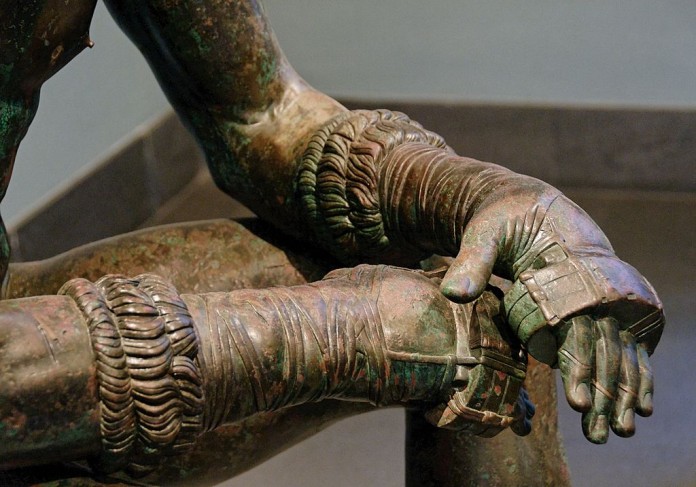Masculinity has taken a hit in recent times. Its virtues have been shunned as irrelevant for our modern age, relegated and rejected as even being harmful and ‘oppressive.’
Many men have a profound sense that things are not right, even if they are unable to fully articulate what these ‘things’ are.
This sense that things are not right affects men’s relationships, their identity and sense of place in the world. In truth, scores of men feel adrift and rudderless in a society that casts how they feel as somehow wrong or illegitimate.
The ancient sculpture of the Boxer stands in defiance of our politically correct modern culture, its sensibilities and its rejection and suppression of the masculine.
What is immediately striking about the Boxer is his concentration. Yet, there is alsoa sense of peaceful contemplation, despite the wounds and scars that clearly mark his face, and the responsibility that he carries on his shoulders, moreover, the challenges and demands that confront and lie before him.
Commentator Gay Talese states that,
“the Boxer is an ancient representation of mankind’s long lasting concern with fear. There’s nothing like it which confronts singularly the fear of being beaten, and not only being beaten, being beaten publicly. In order to do that you have to have a sense of humility and a sense of courage which surpasses the endeavors of most men – even powerful men.”
The boxer confronts his fear with courage, calm and concentration.
Make no mistake, the boxer aims to win, and he will drive all he has and can muster into doing it. Despite his goal, arguably the Boxer, and indeed masculinity itself is not ultimately about winning or losing. Rather, they are both about facing fear – whether it is the fear of an opponent in the ring, the fear of failure, or the fear of death itself.
Masculinity is about facing these fears. Even, and perhaps especially, the ones that threaten to overwhelm, defeat or even kill us.










